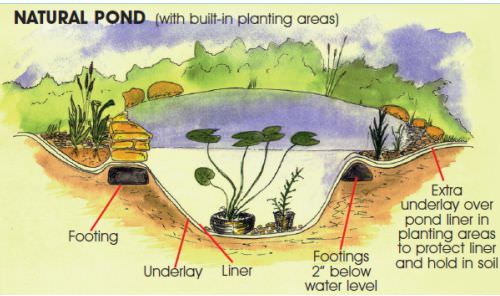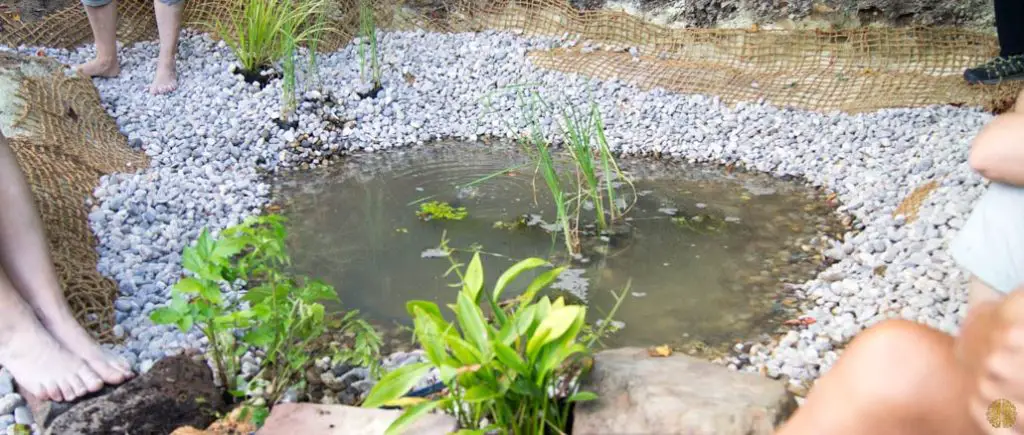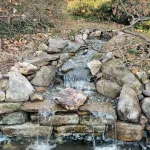Creating a natural pond without a pump can be a rewarding and environmentally friendly project. By utilizing natural processes and design techniques, it’s possible to establish a thriving aquatic ecosystem without the need for mechanical pumps or filters. Whether you’re interested in enhancing the beauty of your property or providing a habitat for local wildlife, building a natural pond without a pump can be a fulfilling endeavor. In this guide, we’ll explore the steps involved in creating a sustainable and low-maintenance pond that relies on natural processes to maintain water quality and support aquatic life.

Credit: worldofwater.com
Choosing the Right Location
Before embarking on the pond construction process, it’s crucial to carefully select the location for your natural pond. Ideally, the site should receive ample sunlight for at least half of the day to support the growth of aquatic plants and algae, which play a key role in maintaining water quality. Additionally, consider the proximity to trees to minimize the accumulation of leaves and debris in the pond. It’s also important to ensure that the chosen area has good soil drainage to prevent waterlogging and maintain stable water levels.
Excavation and Shaping
Once the location is chosen, the next step involves excavating the pond area. The size and shape of the pond can vary based on personal preferences and the available space. Consider incorporating shallow areas along the edges to facilitate the growth of marginal plants and provide habitat for amphibians and invertebrates. As you excavate the pond, be mindful of creating varying depths to support different types of aquatic life, from shallow water plants to deeper swimming areas for fish.

Credit: www.motherearthnews.com
Utilizing Natural Filtration
One of the key principles of a natural pond without a pump is to rely on natural filtration methods to maintain water clarity and quality. This involves the strategic placement of aquatic plants, such as water lilies, floating plants, and submerged vegetation, which help absorb excess nutrients and compete with algae for resources. Additionally, incorporating a gravel or rock substrate can provide a surface for beneficial bacteria to colonize, aiding in the breakdown of organic matter and the conversion of harmful compounds.
Introducing Aquatic Life
After the pond has been shaped and the natural filtration elements are in place, it’s time to introduce aquatic life into the ecosystem. Native fish species, such as mosquito fish or koi, can help control mosquito larvae and add movement to the pond. Additionally, consider introducing snails, freshwater mussels, and other invertebrates to contribute to the overall balance of the ecosystem. These organisms play a role in nutrient cycling and algae control, helping to maintain a healthy and vibrant pond environment.
Maintaining Balance
While a natural pond without a pump is designed to be self-sustaining, it’s important to monitor and maintain the balance of the ecosystem. Regular removal of excess plant material, such as floating debris and overgrown vegetation, can prevent nutrient buildup and oxygen depletion. Additionally, periodic water testing can help identify any imbalances in water chemistry, allowing for proactive adjustments to maintain a healthy aquatic environment.
Enhancing Biodiversity
Beyond serving as a serene and visually appealing feature, a natural pond without a pump can significantly contribute to local biodiversity. By providing a habitat for native plants and animals, the pond becomes an integral part of the surrounding ecosystem. Consider planting native vegetation around the pond to create a transition zone between the water and the terrestrial environment, attracting a variety of wildlife, from pollinators to amphibians and birds.
Conserving Water Resources
Building a natural pond without a pump aligns with sustainable water management practices by minimizing the need for excessive water consumption and energy-intensive equipment. By utilizing natural processes, such as evaporation, transpiration from plants, and rainwater replenishment, the pond operates within the natural water cycle. This approach promotes water conservation and reduces the reliance on external water sources, making it an eco-friendly addition to any property.
Conclusion
Building a natural pond without a pump offers a harmonious blend of aesthetics, ecological function, and sustainability. By embracing the principles of natural filtration, biodiversity enhancement, and water conservation, it’s possible to create a thriving aquatic ecosystem without the need for mechanical pumps or filters. Whether you’re a homeowner looking to enhance your landscape or a conservationist aiming to support local wildlife, a natural pond without a pump can be a valuable addition to any property. Embrace the beauty and benefits of a self-sustaining aquatic oasis, and enjoy the serenity of a natural pond that thrives without the hum of machinery.
As you embark on this journey, remember that every natural pond is a unique reflection of its environment and the careful balance of its components. With thoughtful planning and a commitment to working with nature, you can create a tranquil and biodiverse pond that enriches the landscape and provides a sanctuary for a multitude of aquatic life forms.





